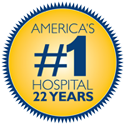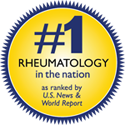Clinical Trials
- A randomized, double-blind, placebo controlled, multicenter phase III study to assess the efficacy and safety of ianalumab in patients with active Sjögren’s syndrome (NEPTUNUS)
- A Phase 3, Randomized, Double-blind, Placebo-controlled Study to Evaluate the Efficacy and Safety of Deucravacitinib in Adults with Active Sjogrens Syndrome (POETYK SjS-1)
Other Research Studies
Sjögren’s Team for Accelerating Medicines Partnership (STAMP)
What is the goal of this study?
Our team is using powerful, cutting edge technologies to gain new insight into a variety of autoimmune diseases. The goal of this study is to identify and understand genetic factors that contribute to Sjögren’s disease. This research will provide valuable knowledge about Sjögren’s disease that is likely to facilitate development of better treatments.
Who is conducting the study?
The Sjögren’s Team for Accelerating Medicines Partnership (STAMP) has expertise in rheumatology, oral medicine, ophthalmology, autoimmunity, genetics. The Accelerating Medicines Partnership is a collaboration between government (NIH), private industry, and the Sjögren’s Foundation.
Who is eligible for the study?
- Individuals who have been diagnosed with Sjögren’s disease
- Individuals with clinical symptoms strongly suggestive of Sjögren’s disease
- Individuals who have participated in the Sjögren’s International Collaborative Clinical Alliance (SICCA) study, or in the OMRF Sjögren’s study between 2004 and 2012
What does participation in the Sjögren’s study involve?
- Complete a health history questionnaire
- Participate in a half-day clinical evaluation to assess the extent of oral, ocular, and rheumatological manifestations of Sjögren’s disease. This will include measurement of saliva output, collection of saliva, tears, blood, and minor salivary glands from lower lip
- Authorize researchers to collect medical records of Sjögren’s disease patients that relate to their diagnoses and treatment
How do I become involved?
Reach out to our research coordinator:
Jen Reed
jreed52@jhu.edu
P: 410-550-9821
P: 410-550-6492
Johns Hopkins Sjogren’s Center Research Registry
What is the goal of this study?
- The purpose of this study is to establish and maintain a comprehensive database with respect to individuals diagnosed with Sjögren’s Syndrome, related autoimmune diseases, and/or an illness suspicious for Sjögren’s. Individuals with sicca symptoms may also be included.
- Clinical information, laboratory, imaging and biological materials (biospecimens) will be used by researchers to gain a better understanding of these diseases. This will help determine whether features of the disease predict future outcomes. This study will also evaluate whether biological samples can lead to a better understanding of the disease, its progression and response to treatment.
Who is eligible for the study?
People 18 years or older with Sjögren’s, related autoimmune diseases, and illnesses with similar features of Sjögren’s may join.
If you have questions about any of the research being done at the center, please contact:
Jen Reed
jreed52@jhu.edu
P: 410-550-9821
P: 410-550-6492


